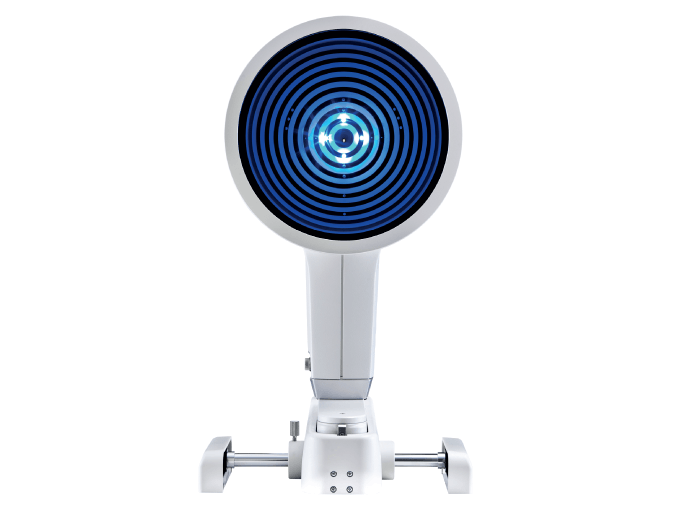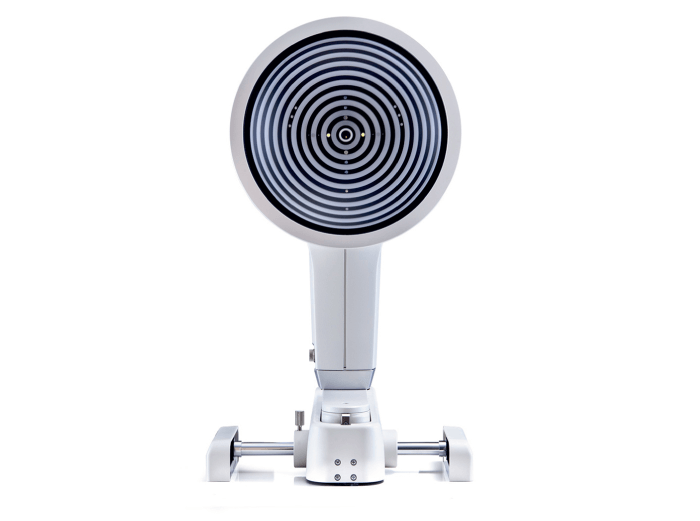
With Keyur Patel, Director, Tomkins Knight and Son Optometrists, Northampton, UK
More often than not, patients do not present with a text book case of a single issue. Usually, they have a combination of concerns that may or may not be relevant to each other. In the world of contact lenses, comfort and drop out are often related to a poor ocular surface, rather than the latest generation of contact lens products. This case report demonstrates how multi-tasking tools, such as the OCULUS Keratograph 5M, allow us to investigate multiple issues and concerns in a parallel stream allowing maximum efficiency and outcome.
A 50-year-old female General Practitioner called the practice after finding out about us on the internet (and through a colleague). She was getting “awful dry eye,” especially while wearing her contact lenses when using a computer screen. She was scheduled for a Dry Eye Assessment. At this appointment, she reported that her main complaint was dry eyes when wearing her contact lenses. The patient was a rigid gas permeable (RGP) lens wearer and had been wearing RGPs for over 30 years. She explained that her current lenses were about a year old and she had been set up for monovision. When not wearing her lenses, she was a lot more comfortable. To manage her dry eye, she had switched to a gluten free diet, was using Omega 3 supplements and had even stopped her contraceptive, but still suffered while using the computer in her lenses, which was becoming more of an issue due to increased telemedicine demands.
At presentation her OSDI (with CLs) was 45.8, her Tearlab® results were 315 and 318 (R+L respectively) and she was Inflammadry® negative. On investigation she reported no previous ocular history, no family ocular history of note and her fundus was healthy. Her contact lenses were quite scratched and she did have bi-temporal Salzman type nodule on both corneas, with some corneal staining on both eyes. A moderate myope, her refraction was -4.00/-1.00 x005 (6/7.6) in the R and -6.00/-1.50 x155 (6/6) in the L, with an Add of +2.25 (Near) and +1.50 (Intermediate).
Video 1
Video 2
Imaging with the Keratograph 5M showed bilateral corneal warpage (Figures 1 and 2 and videos 1 and 2 above), with marked meibomium gland drop out (Figures 3, 4) with an initial non-invasive tear break up of 5.81 sec (first break, avg 13.64) in the R (video 3 below) and 14.22 sec (first break, avg 16.53) in the L.
Video 3
It was concluded that the primary cause of the symptoms was the condition of the RGPs and the cornea with elements of meibomian gland dropout and refractive inadequacy of monovision for the concentrated visual tasks that she required. It was agreed that the corneas needed a re-set, and that RGP wear needed to stop (very hard for a long-term RGP wearing myope). A temporary soft contact lens option would be used while we waited for the corneas to stabilize and we discussed the option of refractive lens exchange (explaining that the time to surgery would also be dictated by the time taken for the corneas to return/stabilize). The patient was advised to do warm compresses (lid heating) and lid hygiene as well as a course of steroids and she would be reviewed in four weeks, to assess refraction, corneal state and tear film and we would arrange some soft contact lenses (multifocal toric). In the meantime, she would consult with her surgeon about clear lens extraction and lens options.
Follow Up
Follow up was slightly delayed due to COVID-19 lockdown in the UK, but the patient presented feeling much happier about her vision. Although the soft contact lenses were adequate, she was still most comfortable in her glasses. Having seen the consultant, she was aware that nothing could happen until the cornea and refraction were stable. The consultant also felt that she would benefit from a course of Intense Pulse Light treatment. At four weeks, despite changing topography, TBUT (Figures 5, 6) and BCVA were improved and OSDI was 2.
Conclusion
When a patient presents with multiple complications (even though they may not be aware), a multi-modal device such as the Keratograph 5M is invaluable. In this case, as well as the “dry eye” the patient presented with, we were able to determine corneal warpage, which in turn had a bearing on our short and long-term management. The ability to instantly demonstrate to your patient what you are seeing and the consequences of these findings is crucial to patient education and ensuring their compliance. Beyond the initial assessment and management, the ability to repeat measurement is essential to good record keeping and to demonstrate to your patients the effects of their treatment plan. In cases of corneal warpage it can be reassuring to the patient to see changes (or lack of) in their corneal status as the process can take some time (approximately 1 month per decade to normalize).
The Keratograph 5M is easy to use and is compatible with older Keratograph devices, allowing shared databases and long-term follow up to be carried out over ‘multiple’ machines. The added functionality has made it an essential tool in the day-to-day management of our patients.


